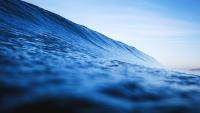 Add My Company
Add My Company
Sign In

The subject of plastic pollution in the world’s oceans once again looms large in the media. On Sunday morning, the BBC featured ‘The Great Pacific Ocean Garbage Patch’ as its second item on its news bulletin, just behind the latest developments on COVID. Coincidentally, The Times on Friday had a full half page story of a sea turtle, which had lost its flipper being caught in abandoned fishing gear. Along with an article similar to the one by the BBC highlighting changes in ‘The Great Pacific Garbage Patch’.
Once again the media spotlight falls on ‘Plastic Pollution’ in our oceans and the consequences of its continuance. Whilst it is inconceivable that any sensible person will not recognise that plastic is a major pollutant when dumped in our rivers and oceans, and that it harms the marine environment and some aquatic life. However, the resurgence of these stories prompted me to learn more about the subject and explore what other ocean pollutants were being dumped in our rivers and oceans, I was amazed to find the following;
Chemicals Dumped in the Oceans – 180 million tonnes
According to Earthland, around 180 million tonnes of toxic chemicals are dumped into the world’s river and oceans, these include lead, cyanide, arsenic, mercury, and at least 30 other dangerous chemicals. Unlike plastics, these chemicals are not inert in the marine environment and decimate areas of discharge, not only all aquatic life, but also all marine vegetation, creating oxygen starved ocean deserts in the affected areas.
Raw Sewage pumped into the Oceans – 80% of the World’s Raw Sewage
The second largest pollutant identified was raw sewage. According to Skimmer (Marine Eco Systems and Management), over 80% of the worlds raw sewage is discharged untreated into the worlds rivers and oceans. Once again, the resultant effect on the aquatic eco system can be devastating with large areas of sea and river water deprived of oxygen, thus, ensuring little lives and nothing can live or grow in the most contaminated areas. In addition, whilst much of this waste is ‘biodegradable’, the bacteria and parasites from human waste are absorbed by fish and other sea creatures, presenting a health hazard when ? to humans caught and eaten. An equally nauseating consequence of the pumping of human sewage into the oceans, as noted by ‘Surfers Against Sewage’, is the detritus which floats on the tide, often to the beach including solid human excrement and sanitary products!
Oil – Spills and Dumping into the World’s Oceans – 706 million Gallons
There are an estimated 706 million gallons of oil waste from industrial discharges, oil spills and natural ocean bed seepage. This figure similar to those produced for chemicals, sewage and plastics has to be taken with the proverbial ‘Pinch of Salt’, however, some large oil spills can be measured. The world’s largest oil spills spewing being between 400 and 500 million gallons of crude oil (Persian Gulf 1991) whilst the BP Deepwater Horizon Mexican Gulf spill was estimated at 150 or 200 million gallons. Whatever the numbers, we know oil in the oceans has a devastating environmental effect. As do the other pollutants noted, who can estimate how much sewage is actually pumped into rivers and oceans or indeed how much plastic is in the domestic waste dumped by the major ocean polluting countries?
What we do know is the crude oil does enormous damage to fishing and fisheries by poisoning the food chain on which they depend (water encyclopaedia) and whilst biodegradation and decomposition occurs overtime, the Tar balls created can last for long periods before dissipation.
Like sewage, oil reaching the shoreline simply compounds the environmental problems, particularly to both marine and birdlife, due to the difficulties removing the oil coating from bird feathers. One final problem is the toxic foam created, which can be spread on land or sea by the prevailing winds.
Plastics dumped into the World’s Oceans – 12 million Tonnes
Estimates of plastic dumped in the world’s oceans are as varied and unreliable as those for chemicals, sewage and oil. The Natural History Museum estimate between 4.7 and 12.7 million tonnes per annum. However, Plastics Oceans claim there are 269,000 tonnes per sq. mile of ocean. (As there are 139.5 million sq. miles of ocean, I leave you to work that one out). Whatever the figure, we know that just 4 countries, China, India, Philippines, and Vietnam account for around 80% of this dumping which is fed into the oceans down just 8 major rivers.
In addition to this plastic waste dumping, there is abandoned fishing gear and the residues from the Tsunami of 2004. These are estimated between them to constitute around 65% of the ‘Great Pacific Garbage Patch’. Whatever its detractors claim, whilst plastic pollution in the oceans is abhorrent. The facts are that it is far less environmentally damaging than oil, raw sewage or chemicals and a much easier problem to solve.
What is particularly interesting is that the other Ocean pollutants noted only rarely make the headlines and somewhat surprisingly no one blames the material, be it oil, sewage or chemicals. Why then when it comes to plastic do people insist on blaming the material?
In Perspective – Ocean Pollution
180 million tonnes of chemical waste per year
80% of the world’s raw sewage per year
706 million gallons of oil per year
12 million tonnes of plastic per year
For more information on Ocean Plastic Pollution Just How Big Is The Problem? talk to WoldPac
Enquire Now
List your company on FindTheNeedle.
